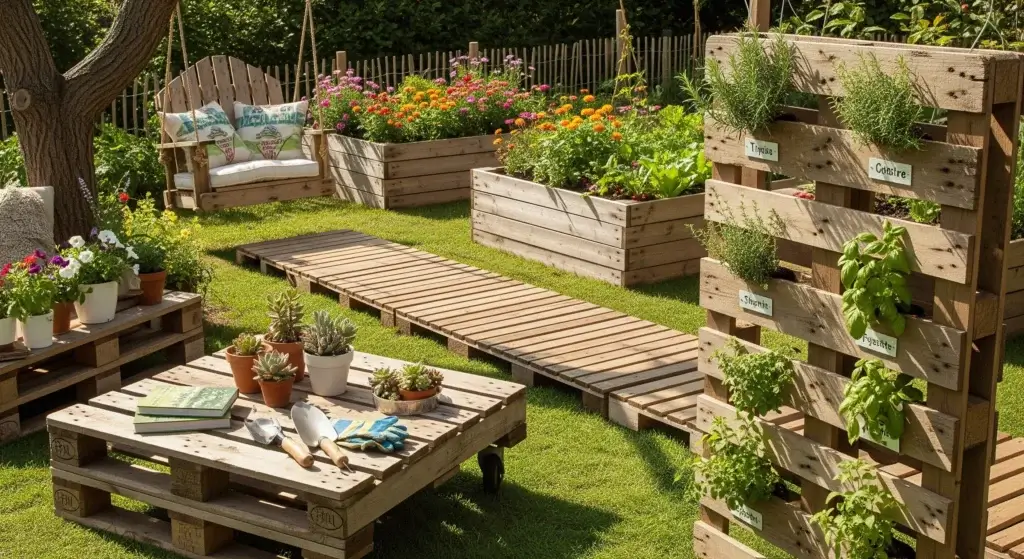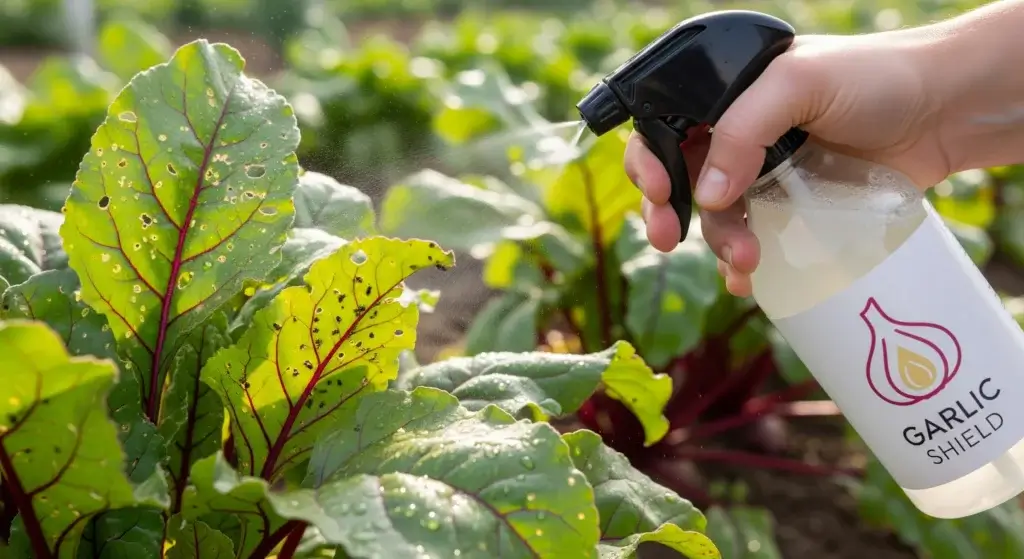
Gardening isn’t just sunshine and sprouting seeds—Mother Nature loves a plot twist.
One day it’s sunny, the next it’s frost, bugs, or a surprise storm. That’s where DIY row covers come in.
Think of them as crop force fields: cheap, easy to make, and super effective.
Whether you’re a backyard pro or just got your first packet of seeds, this guide shows you how to build row covers that protect your veggies, stretch your growing season, and save you cash.
No fancy tools. No drama. Just you, your plants, and a little garden armor—because pests and weather ain’t got nothing on you.
Primary Benefits of DIY Row Covers
Frost protection
Row covers act like cozy blankets for your plants.
They trap just enough warmth to keep frost from wrecking your tomatoes, peppers, and herbs.
Basically, you’re giving your garden a few extra weeks of life—spring and fall bonus rounds unlocked.
Pest control
Think of row covers as VIP security for your veggies.
Aphids, squash bugs, and cabbage worms? Denied entry.
No need to go full Breaking Bad with chemicals—just drop the cover and let the bugs bounce.
Weather shield
Heavy rain, wind tantrums, random hail attacks—your delicate seedlings won’t even notice.
Row covers act like umbrellas that don’t flip inside out.
Plants stay chill, roots stay grounded.
Season extension
You know how some TV shows get extra episodes because they’re just that good?
Row covers give your garden that same extended run.
Start earlier, finish later, and enjoy more fresh produce while your neighbor’s garden is still in hibernation.

- Read also: DIY Cold Frames: A Gardener’s Secret to Year-Round Harvests
- Read also: DIY Greenhouse Trellis: Transform Your Garden Space
Essential Materials for DIY Row Covers
You don’t need to be Bob the Builder or drop big bucks to make solid row covers.
A quick trip to the hardware store (or scrolling online with snacks) gets you everything you need. Here’s what to grab:
Support structure materials
- PVC Pipe: This is the MVP for DIY row covers. It’s cheap, light, and bendy enough to make hoops. Grab the ½-inch kind—10-foot lengths cost about $6–8.
- Galvanized Wire: Want something a bit tougher? #9 gauge wire is your guy. It holds up better in wind and lasts longer, like the Clint Eastwood of row cover materials.
- Rebar or Metal Stakes: These are the bodyguards. Stick them in the ground and slide your hoops over them so the wind doesn’t get your setup across the yard.
Cover Materials
- Frost cloth – The all-rounder. Light, breathable, and solid at blocking light frosts. Think of it as a cozy hoodie for your plants.
- Garden fabric – Like frost cloth’s tough cousin. A bit thicker, it’s better at keeping bugs out while still letting light and water through.
- Plastic sheeting – Want a mini greenhouse? Use 4–6 mil plastic. Great for cold snaps, but remember to open it up on sunny days or your plants might cook like leftovers in a microwave.
- Insect netting – This stuff’s like a mosquito net for your veggies. Super fine mesh that blocks even the tiniest bugs, but still lets your plants breathe easy.
Step-by-Step Guide to Building PVC Hoop Row Covers
This method’s been around forever because it works.
It’s sturdy, simple, and fits just about any garden bed.
Think of it like building a tunnel for your plants to live their best, bug-free lives.
Planning your design
Before buying stuff, measure your bed.
For a standard 4-foot wide bed, you’ll want PVC pipes about 8–10 feet long to get a nice tall arc.
Use this formula if you like math:
Width + (1.5 × desired height) = pipe length.
Not into math? No stress—8 feet usually does the trick for 4-foot-wide beds with decent headroom.
Space your hoops every 3–4 feet. That gives you enough support without going full overkill.
Construction process
Step 1: Cut your PVC pipes
Cut your PVC pipes to size. A hacksaw or PVC cutter works fine.
For a 4-foot bed with a hoop height around 18 inches, go with 8-foot pipes.
Pretend you’re making rainbow-shaped ribs for your garden bed.
Step 2: Create ground anchors
Take 12-inch pieces of rebar or metal stakes and pound them into the ground where you want your hoops.
Keep 4–6 inches above ground—those are your sockets. It’s like building a tent, but way less complicated.
Step 3: Install the hoops
Now take your PVC and bend it into a U-shape, sliding both ends onto the stakes. Instant arch.
If it springs back and smacks you, congrats—you’re doing it right. It’ll settle once it’s secured.
Step 4: Add stabilizing ridge
Zip-tie or clamp a straight PVC pipe across the top of all the hoops.
This ridge pole keeps your tunnel from wobbling like a cheap lawn chair in a storm.
Step 5: Attach the cover
Throw your fabric, netting, or plastic over the hoops.
Make sure it hangs at least 12 inches down each side so it doesn’t sneak off with the first gust of wind.
Use bricks, sandbags, or landscape staples to hold it down.
Think “secure enough to survive a toddler and a curious raccoon.”

Alternative DIY Row Cover Designs
PVC hoops are the go-to, but they’re not your only option.
Depending on your vibe—budget, style, or whether you’re trying to impress your garden club—you’ve got choices.
Let’s break it down:
Wire hoop covers
If your garden gets gustier than a gossip column, go with galvanized wire hoops.
Just bend some 9-gauge wire into arcs and poke the ends straight into the soil.
No stakes needed.
It’s tough, low-profile, and perfect if you want something that doesn’t wiggle every time the wind sneezes.
Wooden frame covers
Want something more solid and square? Build a wooden box frame out of 2x2s, then hinge the top like a lid.
Wrap it in garden fabric, and voilà—you’ve made the VIP lounge of plant protection.
Great for raised beds.
Plus, you can just flip it open like a treasure chest when you need to weed or harvest. Very HGTV meets backyard homestead.
Bamboo tunnel covers
Going for a more natural, eco-friendly look? Try bamboo.
Split it lengthwise, bend it into hoops, and tie it all together with twine.
It’s charming, biodegradable, and Instagram-worthy. Y
our plants get protection, and your garden gets major style points—like the Studio Ghibli of row covers.
Seasonal Applications and Cover Selection
Row covers aren’t one-size-fits-all—think of them like seasonal outfits for your plants.
Here’s how to dress your garden year-round without sweating (or freezing) the details:
Spring protection
Spring’s all about protecting those tiny, hopeful seedlings from surprise frosts and bug invasions.
Use lightweight frost cloth—it lets in sunlight but keeps the cold out, kind of like a plant-sized windbreaker.
Once the temps stay above 50°F during the day, peel it off so your plants don’t roast in their own sweat.
Summer pest control
Your plants can handle the heat, but the bugs? Not invited.
Throw on insect netting—like crop mosquito nets—to block out cabbage worms, cucumber beetles, and other veggie vampires.
Keep airflow in mind. If it gets too steamy under there, your plants might start acting dramatic (aka wilting).
Fall season extension
Fall’s like the encore set of your garden concert.
Use frost cloth again to keep your tomatoes, peppers, and herbs from tapping out too early.
Think of it as giving them a light jacket so they can party a few weeks longer before winter rolls in.
Winter protection
Only the tough guys—kale, spinach, Brussels sprouts—stick around in winter.
Use heavy frost cloth, or layer it with plastic sheeting for extra insulation.
But watch the temps—on warmer days, lift the covers like you’re airing out a blanket fort so your veggies don’t overheat.

Maintenance and Storage Tips
You put in the work—now let’s make sure those DIY row covers don’t fall apart by next season.
A little care goes a long way (and saves you money for more seeds).
Clean up after the season
Once your garden winds down, give your covers a quick spa day.
Rinse off the dirt and bug guts with mild soap and water.
No bleach, no pressure washer—just a gentle wash so they don’t turn brittle and sad.
Check for holes
Look over your fabric for rips, holes, or weird wear spots.
Patch what you can, toss what you can’t. A hole in your cover is basically a VIP entrance for pests, and they will RSVP.
Store it smart
When it’s time to pack up:
- Fold fabric covers like you’re storing clean bedsheets—tight, smooth, no crumples.
- Keep ‘em in a cool, dry place. No sunlight—UV rays are fabric’s kryptonite.
- Lay PVC pipes flat or stand them upright so they don’t warp like a sad pool noodle.
Inspect your frame
Don’t forget about the hoops. Check for bent pipes, wobbly stakes, or zip ties that gave up on life.
Swap out any broken parts before next season so you’re not scrambling mid-planting.
Troubleshooting Common Issues
Even the best DIY row covers hit a few bumps. Wind, heat, sneaky bugs—it happens.
Here’s how to keep your setup strong and drama-free:
Wind damage
If your row cover’s flapping like a superhero cape in a storm, it’s time to weigh it down.
Add more bricks, sandbags, or landscape staples along the edges. And throw in a few extra stakes to keep the hoops from wobbling like a Jenga tower.
Overheating
Row covers can turn into accidental saunas. If your greens look more wilted salad than thriving crop, ventilate.
Lift the sides during warm days or switch to a lighter fabric that breathes better—your plants will thank you for the breeze.
Pest infiltration
If you’re still finding pests inside, you’ve got a breach in the fortress.
Check the edges—even a small gap is a bug superhighway. Lock it down with extra weights or staples. No loopholes for cabbage worms.
Material degradation
Row cover fabric has a shelf life—especially if it’s been sunbathing too long.
UV rays = slow death. If it’s tearing, thinning, or just looking sad, replace it.
And next time, store it in a shady, dry spot so it lasts more than one season.

- Read also: Maximizing Small Spaces: DIY Rooftop Garden Ideas
- Read also: DIY Winter Gardening Projects to Keep Your Green Thumb Busy
Final Take: Row Covers = Garden Superpower
DIY row covers are one of the smartest, cheapest upgrades you can make.
They block frost, bugs, and wild weather—and they stretch your growing season like yoga pants on a Sunday.
Start simple. Try one bed with a basic PVC setup, see how your plants thrive, then scale up.
Whether you go with hoops, wood frames, or fancy bamboo tunnels, just match your design to your garden and climate.
Build it right, keep it clean, and these covers will have your back for seasons.
It’s not about fighting nature—it’s about giving your plants a little backup so they can do their thing.



